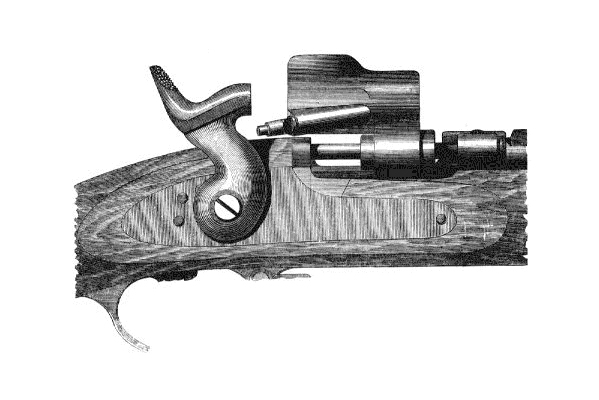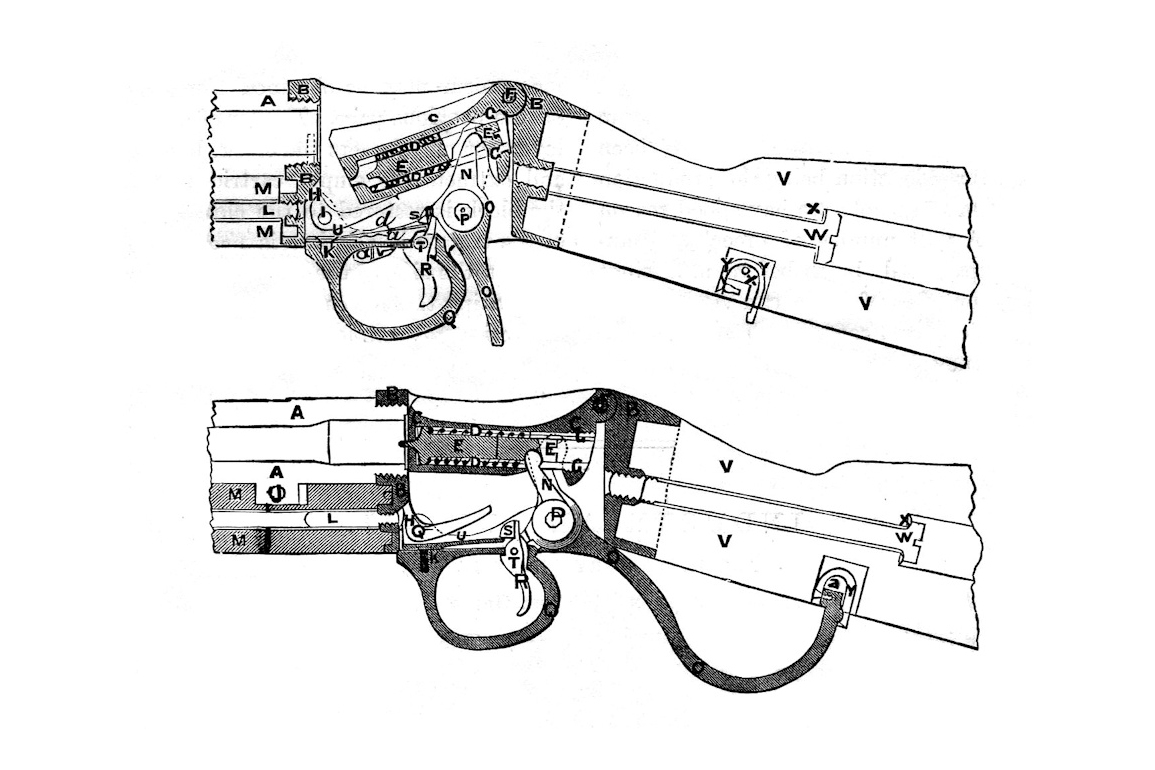The Brunswick Rifle: Part 1 > Part 2 > Part 3 > Part 4
During 1850, a further batch of 4,000 rifles was put under construction but by then a new conception of rifle was under preparation and in May the board agreed the Brunswick would be superseded by the Mini. On October 1852 the stock of Brunswick rifles was reported at 11,530. Of these 1,312 were engaged in the fighting at the Cape and 624 were with the Canadian Rifle Regiment. With the end of the Brunswick in sight it was decided to complete only those rifles for which there were materials in store. In January 1853 the Rifle Corps were told to hand in their Brunswicks in exchange for the Mini, or Pattern 1851 rifled musket.
The Brunswick was revived in 1864 when some were made for the East India Government. They may be identified by the arrow over the letter I on the lock plate. Another noticeable difference was the size of the ramrod, being slightly reduced. Privately made Brunswicks have been noted with dates in the 1870’s. In spite of this apparent popularity, the Brunswick received more unfavorable criticism than any other British arm. During the Enfield trials of 1852 the comment was made: “The loading of this rifle is so difficult that it is wonderful how the regiments can have continued to use it so long. The force required to ram down the ball being so great as to render a man’s hand too unsteady for accurate shooting”. It is all very strange when one considers the careful trials, which led to its adoption.
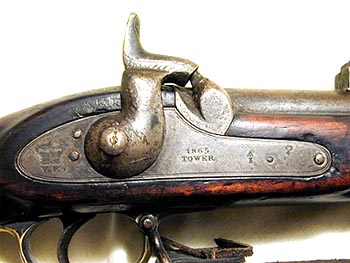
Brunswicks were issued to rifle regiments in Britain, Canada and other colonies as well as select units of the East India Company. Pictured right is the Third Pattern issued to the Sihk Regiments. Note the letter I below the arrow and the later date of 1865. It was also adopted by several units in several guises.
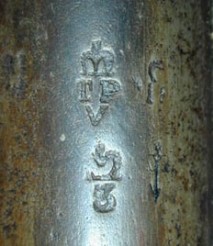
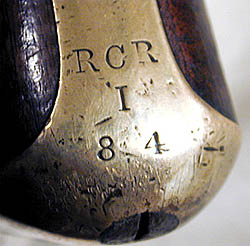
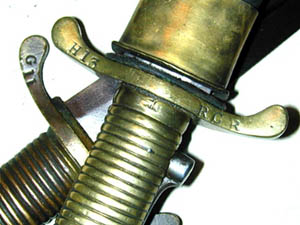
Regimental marks of the Royal Canadian Rifle have been found on both first and second pattern bayonets. The photo below shows the RCR stamps and the two different Regiment or Companies of H13 and G11.
Right: Royal Canadian Rifle Regiment Cross-guard Regimental Markings
